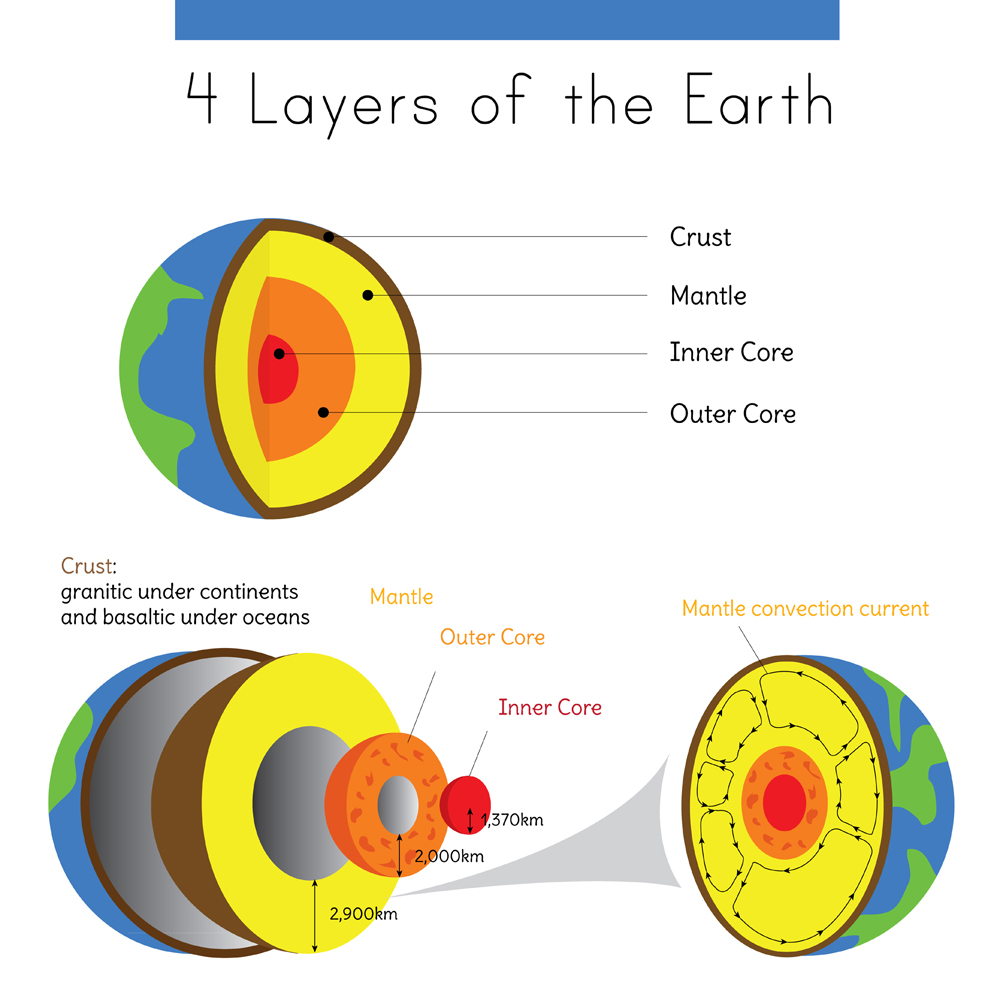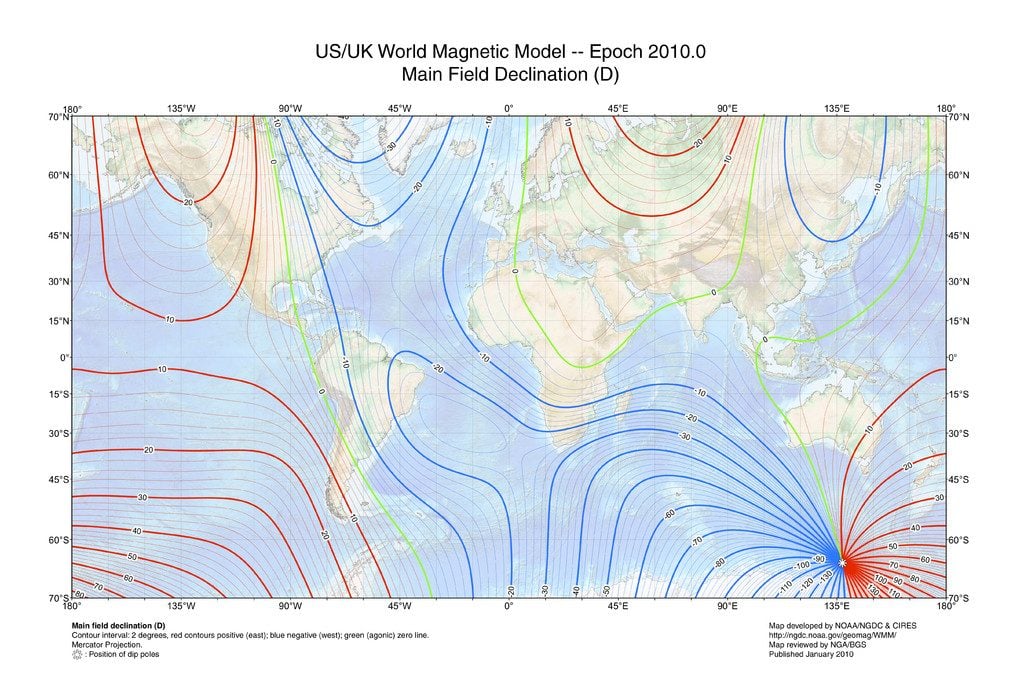Table of Contents (click to expand)
Both compasses and GPS cannot work normally at the poles. The compass needle will point in any random direction. GPS might be able to tell you your location, but it cannot direct you.
Life has become fairly easy thanks to the invention of the Global Positioning System (GPS), the modern form of navigation. All you need to do is feed the location into the system and GPS will guide you. You basically can’t be lost!
However, the world wasn’t always this simple. GPS is a fairly new technology, so before it existed, the compass was the trusted and true adviser. Compasses have been used since 1 A.D. when they were first constructed by the Han dynasty. In fact, compasses and maps were once smuggled through Monopoly board games to prisoners of war stuck in Germany during World War II.
However, GPS and compasses, like any other technology, are not fail-proof, but instead work differently on different parts of the Earth.
In some places, they might even stop working entirely or work inaccurately!
Recommended Video for you:
The Mystery Of Earth’s Poles
The Earth has two kinds of poles—Geographical and Magnetic. Geographical poles are the northernmost and southernmost points of the Earth, where the axis of rotation meets the surface. Every planet has geographical poles.

However, some celestial bodies (like Earth) possess a magnetic field too. Earth’s magnetic field is a result of the iron core of the planet. The inner core is solid, while the outer core is molten. Convection currents are continuously generated in the outer core and this motion of molten iron leads to the formation of a magnetic field.

The magnetic field extends outwards from the Earth’s surface, while the inside of the Earth behaves like a huge bar magnet. Thus, Earth has a magnetic North pole and a magnetic South pole. The magnetic North pole is situated near the geographic South pole and the magnetic South pole is situated near the geographic North pole. Geographical and Magnetic poles are not present in the same locations.
There is a distance of approximately 500 km between the geographic North pole and the magnetic South pole. Magnetic poles are not fixed and are continuously changing their position. Even the geomagnetic field decays, reverses, and re-establishes itself over time.

The variable strength of the magnetic field and the continuous shifting can cause compasses and GPS to malfunction, but before delving into the whys, let’s first try to understand how compasses and GPS work.
How Does A Compass Work?
A compass is a very basic device, yet it has immense importance. It works on the principle that magnetic north attracts magnetic south. As mentioned before, the Earth has a magnetic North pole and a magnetic South pole. The compass is a small device with a magnetic needle.
When the compass is kept parallel to the ground, the needle rotates. The direction in which the North of the needle points is the direction of the magnetic South pole.
Since the magnetic South pole is situated near the geographic North pole, the direction in which North of the pointer points is the direction of the geographic North pole. Similarly, the direction in which South of the pointer points is the direction of the geographic South pole.

Using A Compass On The Poles
Earth has its very own magnetic field that is strong enough to make a compass work. However, a magnetic field, being a vector quantity, has a direction too, apart from strength. Therefore, if you take your compass with you and stand on either of the poles with the compass kept horizontally, such that the direction of the magnetic field is perpendicular to the needle of the compass, the compass needle will point in any random direction.
How Does GPS Work?
GPS or Global Positioning System is a satellite-based navigation system. Just as sailors in ancient times looked towards the stars to guide them on the right path, we have a combination of manmade satellites that can do the same thing. The whole GPS system consists of ground stations, satellites, and receivers. The satellites continuously send signals to a receiver (present in your mobile phone, laptop, car). The receiver performs calculations and locates you. The greater the number of satellites, the greater the accuracy. Ground stations are used for manning the satellites.

The Global Positioning System is owned and operated by the USA. Other countries have come up with their own positioning systems, like BeiDou of China and GLONASS of Russia.
Using GPS At The Poles
It’s pretty clear why a compass would malfunction at the poles, but the question is whether GPS also malfunctions like compasses? You might be thinking that GPS does not depend on the magnetic field of Earth, but rather on manmade satellites, so it should work fine. Well, you are both wrong and right.

GPS function indeed depends on satellites orbiting the Earth, but that functionality is limited to providing a pinpoint location. It can tell you where you are at a given point in time, but it cannot necessarily guide you to your destination. To work as a direction guide, a GPS device comes installed with maps (like Google Maps on a mobile phone) as well as a compass. Yes, you read that right, GPS works in sync with a compass. Thus, GPS itself does not malfunction at the poles, but due to the broken compass, the GPS device will no longer be able to show directions.
We must also understand that GPS is not immutable and its working can be affected by poor weather conditions, obstructions (e.g., if you’re in a basement) and it can also show errors due to the Ionosphere Effect.
The Ionosphere is a layer of the atmosphere that extends from 50 km to 1000 km above the Earth’s surface. It consists of charged particles in continuous motion. Therefore, the GPS signal transmitted from the satellite may be dispersed in the Ionosphere and delayed. This causes errors in the reading. Since the Ionosphere is not homogeneous, it’s difficult to have a single error-correction formula.
Navigation Vs. Magnetic Poles
Whenever you hold a compass horizontally, it points to the magnetic South, which is situated at a minimal distance from the Geographic North. To correct this anomaly, a World Magnetic Model exists to represent the Earth’s nuanced magnetic field. A GPS device also works with the help of a WMM, which is why it’s able to show you the correct path.

However, the continuously shifting magnetic field warrants a new WMM every five years. Basically, you can compare WMM to a normal geographical map. If the landmasses keep shifting, you’ll need a new map every time to determine correct locations. Similarly, if the WMM you’re using is obsolete, a GPS tracker might lead you to the wrong location.
Conclusion
A compass may sound like an outdated device, but your modern GPS would be nothing without a compass. Both work together and help you reach your destination by pointing out locations on the World Magnetic Model map.
In case you travel to either of the planet’s poles, the GPS might still be able to track you, but it won’t be able to help you reach your destination due to the dysfunctional compass!
References (click to expand)
- Smith College Museum of Ancient Inventions: Compass. Smith College
- Monopoly, Maps, and the Great Escape | UC Geography - geog.ucsb.edu
- Compass. University of Alicante
- 9.3 Earth's Magnetic Field – Physical Geology. opentextbc.ca
- How Does GPS Work? | NASA Space Place. The National Aeronautics and Space Administration
- World Magnetic Model - Uses - NOAA. The United States National Geophysical Data Center











